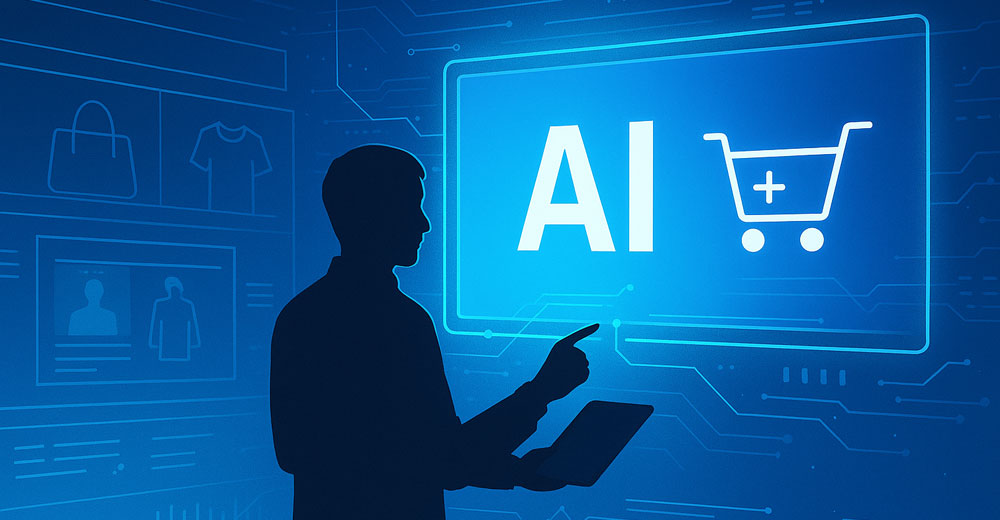
With AI agents expected to account for 20% or more of e-commerce traffic in the next five years, digital merchants face a new wave of risks and opportunities. To help e-commerce businesses meet those risks and capitalize on those opportunities, Forter, based in New York City, rolled out some new features for its trust platform on Tuesday.
Those features include:
- Enhanced AI agent detection, which uses advanced AI models to distinguish between different types of AI agents;
- AI-driven browsing identification, which strengthens detection of AI-assisted shopping, including browsing activity referred from AI agents, chatbots, and other tools;
- An agentic dashboard to visualize all agentic activity detected on a merchant’s site; and
- Publication of anonymized insights on agentic behavior across the Forter global network, offering industry-wide intelligence on emerging trends.
These new features arrive at a critical moment in e-commerce, Forter said in a statement. Immediately after the debut of ChatGPT agent, Forter recorded an 18,510% day-over-day increase in agentic traffic across its network, signaling a dramatic shift in how bots, assistants, and autonomous agents interact with merchants.
This new era of AI, it continued, with product research, discovery, and transactions, both assisted by and delegated to AI agents, poses new complexity for merchants that legacy approaches to digital engagement, identity management, and fraud prevention will fail to solve and potentially create significant friction for consumers and risks for the brands themselves.
AI Agents Challenge Brand Influence
Table of Contents
“Agentic AI will accelerate e-commerce writ large,” said Eli Clemens, a policy analyst with the Information Technology and Innovation Foundation (ITIF), a research and public policy organization in Washington, D.C.
“This will happen first by streamlining the consumer experience, by automating much of the processes of searching for, selecting, and purchasing a given product,” he told the E-Commerce Times. “However, that acceleration will put pressure on the entire retail stack, especially logistics and procurement, which will need to evolve in parallel to match more autonomous digital commerce.”
“Just as companies developed lean and just-in-time manufacturing models in response to technological changes, retailers may need to develop new models to stay competitive as agentic AI diffuses into e-commerce,” he predicted.
Daniel Keller, CEO and co-founder of InFlux Technologies, a decentralized cloud services company, pointed out that, for retailers, agentic AI means a loss of engagement from human shoppers and a potential increase in online sales.
“However,” he told the E-Commerce Times, “agentic shopping may not drive sales in authentic ways. Agents will be preprogrammed to shop based on what the consumer desires, rather than what resonates with the consumer based on retail brand identity.
“For example,” he continued, “if someone wants a blue dress, an agent will purchase it, regardless of where the material was sourced from, how it was made, or the brand.”
“Retailers will have to work much harder in their marketing and outreach strategies when 20% of potential buyers are artificial and cannot be influenced by traditional marketing tactics,” he added.
Prepare for Non-Human Customers
Peter Horadan, CEO of Vouched, a digital identity verification company in Seattle, maintained that the 20% number is a low estimate. “Which is easier,” he asked, “telling your software agent you need new pickleball shoes by tomorrow or going to a site, finding what you want, navigating the checkout UI, and entering your payment?”
“I’m going with the agent every time,” he told the E-Commerce Times. “Software agents are poised to explode in usage.”
Wesley Almeida, an omnichannel retail expert based in Toronto, advised retailers to start designing now for non-human shoppers. “Retailers who don’t adapt risk losing visibility into who their customers really are and missing out on new conversion paths entirely,” he told the E-Commerce Times.
Identity will become a critical topic, added Irina Bukatik, vice president of product at Branch, a deep linking and attribution platform in Mountain View, Calif. “Retailers have long sought to understand their customers in detail,” she told the E-Commerce Times, “but in an agentic e-commerce world, it gets fuzzy whether they’re selling to the consumer or the AI agent.”
She explained that consumers expect comprehensive product information before buying, which means retailers must ensure their data is complete, accurate, and readily available. “If a chat agent doesn’t have the right inputs, it simply won’t recommend that product,” she said. “In this new landscape, if you’re not fueling the AI, you’re not even in the conversation.”
“While it may appear that the consumer is making the final call, in reality, the chat agent controls which products even make it through the door,” she added. “If you’re not optimized for the agent’s criteria, your brand may never be surfaced, making the AI agent your new first customer.”
AI Demands New Fraud Strategies
Forter noted that as agentic AI becomes a core component of daily consumer interactions with brands — similar to the adoption of e-commerce and m-commerce — there will be a growing need for merchants to transform both the customer experience and tech ecosystem to meet the needs of both consumers and AI agents while also being prepared for the evolution of fraud.
Across a network of hundreds of enterprise retail and commerce brands, Forter has observed a 50% increase in fraud using scripted and automated attack modes to rapidly change identities and manipulate images. Additional emerging threats include the use of synthetic identity, where multiple data points are brought together using AI to mimic a true consumer or agent identity, it added.
“Agentic AI presents an enormous growth opportunity for merchants,” Cyndy Lobb, Forter’s chief product officer, said in a statement. “What we hear from our customers and the market at large is that controlling fraud and risk in this AI era is critical to unlocking this opportunity.
AI agents will force retailers to shift from reactive, rules-based fraud detection systems to intelligent, real-time decision-making, maintained Diana Rothfuss, global solutions strategy director for risk, fraud and compliance for SAS, an analytics and AI software company in Cary, N.C.
“They’ll need the ability to continuously monitor behavior across channels as well as to detect emerging threats and autonomously act to block or escalate suspicious activity,” she told the E-Commerce Times.
“Next-gen fraud platforms leverage synthetic data and continuous learning to adapt quickly to new fraud patterns and reduce false positives — simultaneously protecting the retailer and the customer experience,” she added.
The Need for AI Agent Visibility
The ITIF’s Clemens explained that AI agents can be tricked in ways humans are not and vice versa. “That means bad actors will develop new manipulation tactics, and old anti-counterfeiting, anti-fraud, and anti-consumer risk defenses may no longer be as effective,” he noted.
“For both retailers and regulators, visibility into agentic interactions will be crucial, and governments may need to deploy AI test agents to detect fraud and retail crime in real time,” he said.
“Without agentic visibility, retailers are flying blind, namely because they cannot tell the difference between helpful customer-side agents like shopping assistants or inclusive accessibility tools and hostile or damaging ones,” added Steve Zisk, senior product marketing manager at Redpoint Global, a global customer data platform and engagement strategy provider.
He explained that agentic visibility empowers retailers with more intelligent fraud detection without disrupting legitimate consumer behavior; accurate attribution modeling so retailers know who, how, or what influenced the purchase; and personalization logic tuning, which ensures experiences adapt based on agent versus human interaction.
“Visibility is the first step toward strategic, beneficial engagement with both humans and their digital agents,” he said.





